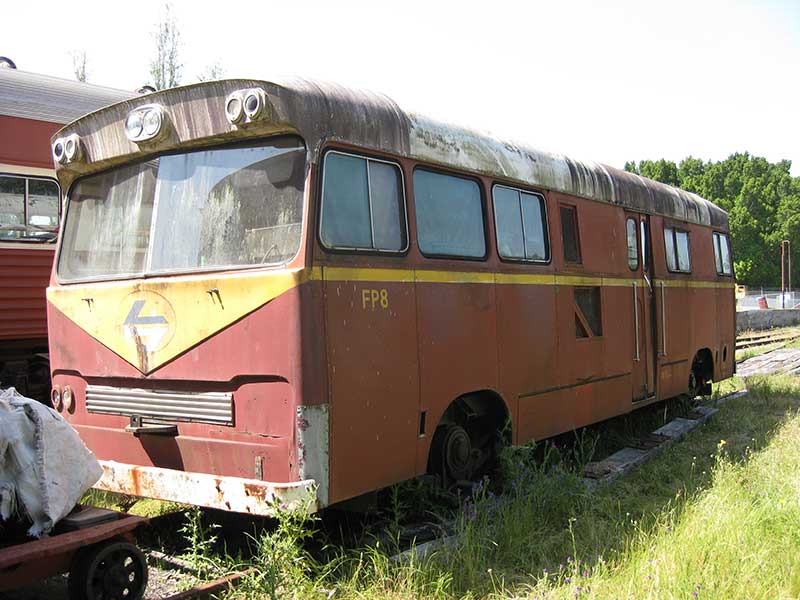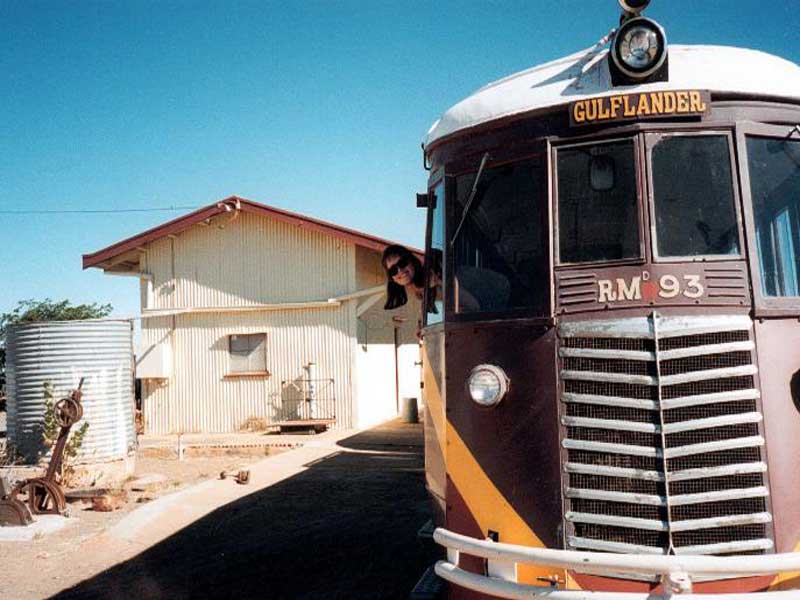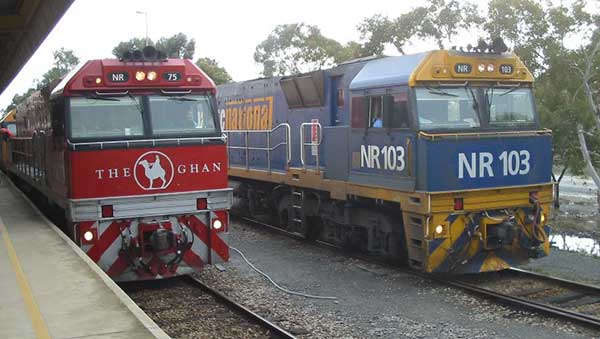Railbus

New South Wales rail pay bus
A railbus is a lightweight passenger railcar that shares many aspects of its construction with a bus, typically having a bus (original or modified) body and four wheels on a fixed base, instead of on bogies. Originally designed and developed during the 1930s, railbuses have evolved into larger dimensions, with characteristics similar in appearance to a light railcar, with the terms railcar and railbus often used interchangeably. Railbuses designed for use specifically on little-used railway lines became almost commonplace in outback Australia.
Railbuses have been replaced by modern light DMU (Diesel Multiple Unit) and EMU (Electric Multiple Unit) railcar designs. Modern diesel-electric railcars, which can be run coupled as multiple units, share role and specifications with railbuses (albeit with improvements in noise, low floor design, fuel efficiency, speed and other measures) but are usually not referred to by the term "railbus" any longer.
In 1937, the NSW Department of Railways added six Waddington-built four-wheel streamlined FP Paybuses to serve on small branch lines out Cowra and Harden that did not have enough passengers to justify a rail motor. Powered by a Ford V8 engine, they were given the designation FP1 to FP6. When the railbus service wasn't popular, several of the buses became mobile pay cars used to pay railway employees at stations and working on tracks. The first New South Wales railbus, FP1, has been restored where it is on display at the NSW Rail Museum in Thirlmere. Another seven were built by Comeng in the 1960s.
The NSW Paybus
The name paybus came about as the buses were initially introduced to run payroll for railway employees to various parts of remote New South Wales. One of the buses, FP5 was destroyed in a payroll robbery attempt at Yanderra in 1941. There were 13 paybuses built in New South Wales, and they were all built by Waddingtons/Commonwealth Engineering. The buses, as expected, all had four wheels, but, of course, sat on bogies rather than traditional rubber wheels.
The Gulflander
The Gulflander railmotors, which run between Forsyth and Normanton in the Gulf Country of northern Queensland, are the only surviving examples of first-generation railmotors still in use for commercial passenger services. The first Gulflanders were built in 1929, and all were built on bus and truck chassis of the Associated Equipment Company (AEC). Buses in London had been built on the same type 506 chassis since 1914. Thirty-eight of the chassis were imported into Queensland from 1927-31, and fitted out with seats and bodies, and converted for rail use.
Thirteen power units have been used on the line. It is unusual that of the 13 units, 12 survive in one form or another and most are still in the region due mainly to its remoteness. The first six railbuses were steam powered, four had petrol motors and the rest had diesel mkotors. The steam powered examples were true railbuses, and not railmotors, as they did not run on on bogies. RM93, the present Gulflander, is a 102 horsepower Gardner diesel engine railmotor built at Ipswich Railway Workshops in 1950. It arrived in Normanton in 1982.












